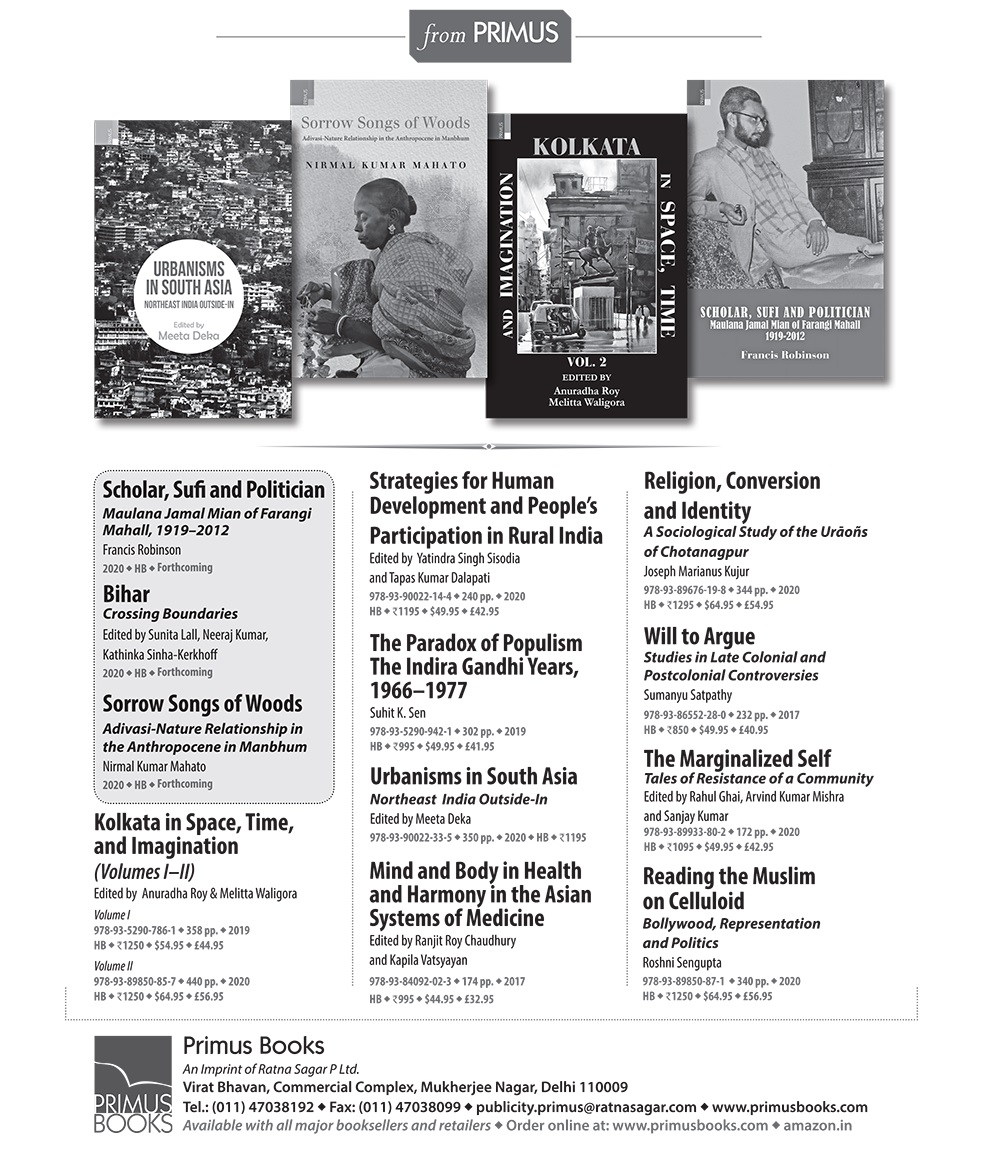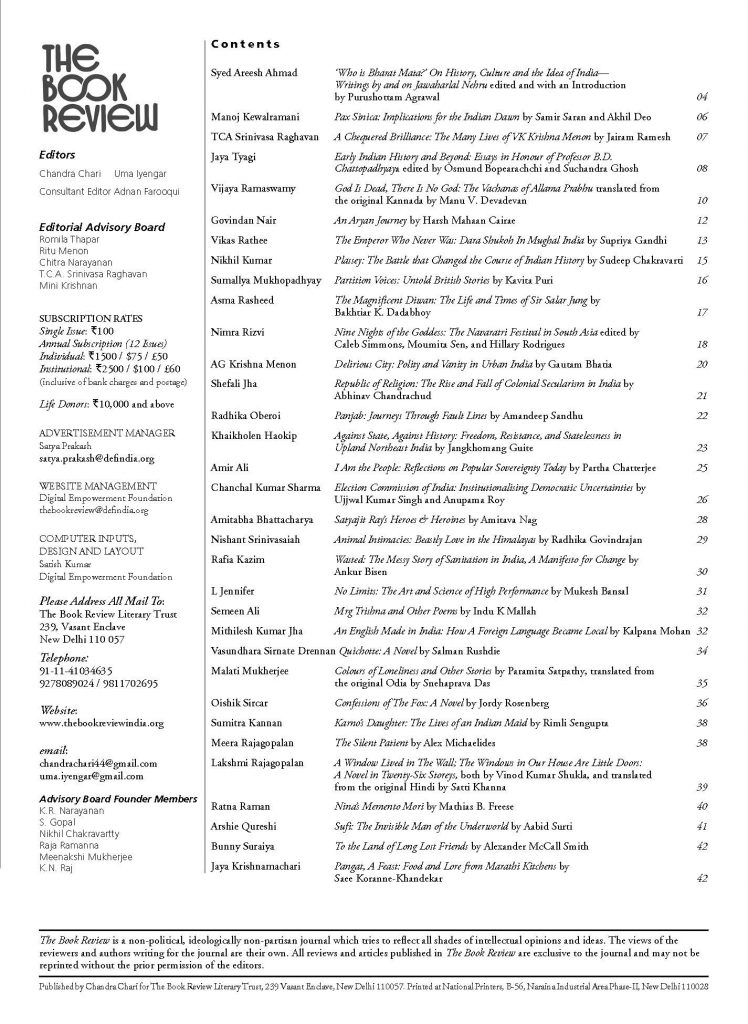Purushottam Agrawal’s edited book on Nehru, provocatively titled Who is Bharat Mata?—among many other admirable qualities—has the grace of opportune timing. It comes at a precarious moment of our history when the memory of Nehru is dimming, almost irrevocably one.
Over the past few years, there’s been a growing debate about the implications of China’s rise for the future of the liberal international order. Is China a revisionist power that is seeking to craft a Sino-centric world order? Is it a fragile superpower whose actions.
This is a very fat book about a very thin man, a man moreover who was very arrogant, very rude, very obstreperous and, as the title suggests, very brilliant. In the end, though the brilliance served him poorly and he is remembered—by a rapidly dwindling number.
The work of historians is to deconstruct the past and re-present it, not necessarily as a coherent whole or one of consensus (Joan Scott, Gender and Politics of Representation) but rather, to explore the complexities in the past—including fissures and the conflicts that existed.
The title is a misnomer. This tantalizing title of a book of translation that is saturated with divinity is an invitation to the enterprising reader to explore what lies within and what lies beyond the imagined entity called ‘God’. I would like to begin my review.
This is a daring outlier of a book. At a time when genetic research, coupled with linguistic and archaeological studies, provide path-breaking revelations on ‘who we are and how we got here’, Harsh Mahaan Cairae has chosen to trace the journey of the Aryan.
Certain historical events—often, military or strategic in nature— engender obsessions with counter-factual questions. Questions such as, ‘what if Hitler and the Axis had won’, ‘what if Jinnah had died before August 1947’, and ‘what if the South had won the U.S. Civil War’, continually.
Before Robert Clive slit his jugular, perhaps in a paroxysm of violent pain in the abdomen, he had excused himself from a game of whist to visit the toilet. He was in his Berkeley Square townhouse in London and had ordered for his carriage to take him to Bath later after noontide.
‘The 1940s’, observes Ashis Nandy, ‘introduced into the South Asian public life a new actor—the refugee.’
Bakhtiar Dadabhoy’s political biography of Salar Jung I, the administrator most often credited with engineering Hyderabad’s turn to modern times is a welcome addition to the field of Hyderabad studies. It tracks the life and times of a man widely acknowledged.
Divided into four sections, the fifteen essays in Nine Nights of the Goddess are a coming together of disciplines, methodologies, sources and places on traditions of the nine-day Navratri celebrations, also known as Navaratra, Mahanavmi, Durga Puja, Dasara or Dassain throughout South Asia.
Gautam Bhatia’s books on architecture in India are, by and large, autobiographical. They are thoughtful reflections of a sensitive and idealistic practitioner at odds with the quotidian values of the profession. As he sees it, it is a profession that actually.
In the abundant literature on secularism that is now at hand, the range of comparative work on distinctive projects of secularism, in different parts of the world, has widened significantly, moving away from earlier binary classifications. The literature shows.
The tenor of Amandeep Sandhu’s Panjab: Journeys Through Fault Lines is established in the very first chapter titled Satt–Wound. The author, born in Rourkela, admits to only a fragile link with Punjab (spelt Panjab)–his family once belonged to the State. He then provides images that are intimate and distant, uniquely personal and universally familiar all at once: brass vessels.
Colonial stereotypical portrayal of the myriad hill-tribes of India’s North East as, inter alia, demoniacal, relics of the past and uncivilized—abstract principles intended to rationalize the imperial project—has undergirded much of the dominant understandings about the region.
This is a timely intervention by Partha Chatterjee on the question of popular sovereignty in an era of populism and abounding authoritarianism. The book is based on the Ruth Benedict Lectures that Chatterjee delivered at Columbia University in April 2018 and as he admits candidly.
Election Commission of India: Institutionalising Democratic Uncertainties has hit the shelves—physical as well as digital, at a time when the Election Commission of India (ECI) has come under unprecedented scrutiny over its alleged failure to enforce election norms.
Satyajit Ray (1921-1992), who has been one cultural icon, admired as much in Bengal as in much of the world, continues to inspire filmmakers and scholars of different hues. Besides making twenty-eight feature films, all in Bengali except Shatranj Ke Khilari.
Splendid is not the word. Finally, an exemplary work of research that consciously blurs the boundary between the human and the non-human. In Animal Intimacies: Beastly Love in the Himalayas, Radhika Govindrajan attempts and successfully manages to show the reader.
Ulrich Beck in his much-acclaimed book Risk Society: Toward a New Modernity throws light on the consequences of a wide range of hazardous and deadly risks of a highly industrialized and urbanized society. He further elaborates that modern risks are not restricted.
‘May the force be with you!’ The last line of the book is not a mere wish but a self-proclaimed statement of a tech entrepreneur, whose smart work has won many laurels. Decoding mental agility and extraordinary physical ability, Mukesh Bansal, the founder.
How long is the journey from the flash of insight To the printed page? Indu Mallah’s poems give the reader a glimpse of that journey which has to be made before one can pour out how one feels about the way things work.
Kalpana Mohan’s book explores the growing aspirations for learning and mastering a foreign language in contemporary India. She provides a rich sociological account of expectations, anxieties, and consequences of such aspirations on not just India’s youth.
Quichotte (pronounced key-shot), as the first page helpfully tells the reader, is a novel written by someone who very obviously watches a lot of TV, or so it seems. At its best the novel reflects an emergent way of thinking where there is very little differentiation.
‘I write to … express that part of women’s lives which is often buried and endured in silence.’ This line from Paramita Satpathy’s conversation with her translator says it all. Each of the fourteen stories in this collection showcases a different problem—each a common issue, rarely discussed.
This novel—and I’m using this classification as a temporary placeholder for an increasingly unstable yet resilient genre—is about a chanced upon manuscript dated 1724 which carries the confessions of Jack Sheppard, ‘an English folk hero and jail breaker.
When in doubt of your mettle, Rimli Gupta’s book, Karno’s Daughter makes for a good litmus test. If you feel exhausted on reading it, you are a wimp, but if the trials and tribulations of Buttermilk the protagonist buoy you, there is hope for you.
Have I died and gone to Heaven,’ I wondered. ‘I have been asked to review a detective novel my most favourite reading nowadays!’ And what a novel at that! The first book published by the author, it tells a gripping story in the manner of …no, no.
In 1958, a young boy from a small town in Madhya Pradesh failed in Hindi in the school final examination, because of which he had to enrol in an agricultural college where there was no Hindi. He completed the course and taught in an agricultural college for many years after.
Memento Mori is Latin for ‘remember you must die’. The recognition of mortality and the reiteration that life is lived in the midst of death is part of an old tradition iterated in cultures across the world through music, art, poetry, philosophy and writing.
Iqbal, aka Sufi and Aabid, the author, grew up in different households in Dongri, went to the same school and faced nearly similar circumstances at home. Their lives never intersected, and they did not witness each other’s trials and tribulations. Iqbal’s father.
There are not many fictional characters that acquire lives of their own. Sherlock Holmes comes to mind, as do Rumpole of the Old Bailey, Don Quixote, Cyrano de Bergerac and the inimitable Jeeves. The most recent entrant to this exalted and much-loved hall.
The title and subject of the book stirred up a deep sense of nostalgia in me. My siblings and I grew up in the Vidarbha region of Maharashtra in our formative years. The names of dishes in this book—Kaande pohe, thali peeth, varanbhath, etc.
The tenor of Amandeep Sandhu’s Panjab: Journeys Through Fault Lines is established in the very first chapter titled Satt–Wound. The author, born in Rourkela, admits to only a fragile link with Punjab (spelt Panjab)–his family once belonged to the State.
The work of historians is to deconstruct the past and re-present it, not necessarily as a coherent whole or one of consensus (Joan Scott, Gender and Politics of Representation) but rather, to explore the complexities in the past—including fissures and the conflicts that existed.





































